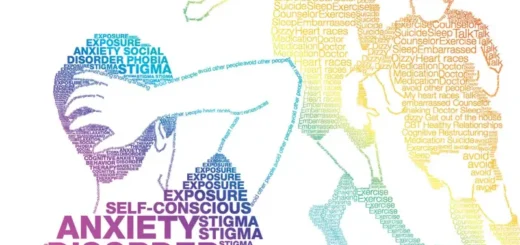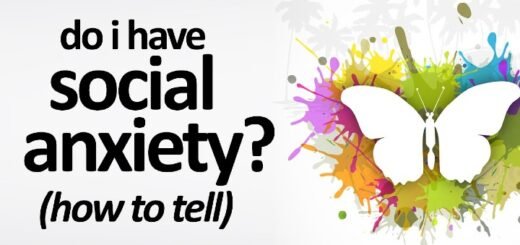Nonverbal Cues: Combatting Social Phobia in Warm Environments
In New Zealand, social phobia affects many individuals, making everyday interactions daunting. Understanding the importance of nonverbal cues is crucial in creating a welcoming atmosphere for those navigating these challenges. From friendly smiles to open body language, these subtle signals can significantly ease anxiety and foster connection, providing essential social phobia support.
By cultivating an environment rich in positive nonverbal communication, communities can help individuals with social phobia feel more at ease in social settings. This approach not only enhances individual experiences but also promotes inclusivity and understanding. For more information on overcoming social phobia in New Zealand, visit Social Phobia Support to explore valuable resources and strategies.
The Importance of Nonverbal Cues: Creating a Welcoming Atmosphere for Those with Social Phobia
Understanding Nonverbal Communication
Nonverbal communication encompasses a range of cues that convey messages without spoken words. This includes facial expressions, body language, gestures, posture, and eye contact. For individuals with social phobia, these cues can significantly impact their comfort level in social settings. Understanding the basics of nonverbal cues can help create a more welcoming atmosphere.
For instance, a warm smile can signal friendliness and openness, making individuals feel more at ease. In contrast, crossed arms or lack of eye contact can be perceived as unwelcoming or defensive. When engaging with someone who may struggle with social interactions, being mindful of these nonverbal signals is crucial.
Additionally, cultural differences can influence how nonverbal cues are interpreted. In New Zealand, where a diverse population resides, being aware of these differences can enhance communication and foster an inclusive environment. Resources like Social Phobia New Zealand provide valuable insights on how to approach these interactions with sensitivity.
The Role of Body Language in Social Interactions
Body language plays a pivotal role in conveying emotions and attitudes. It can be especially important for those with social phobia, who may be hyper-aware of the signals they are receiving from others. Open and inviting body language can encourage these individuals to engage more freely.
To foster a welcoming atmosphere, maintain an open posture—avoid crossing your arms and lean slightly forward to show interest. Nodding occasionally can also indicate that you are engaged in the conversation. In New Zealand, where community and connection are valued, these gestures can help bridge the gap for those feeling anxious.
Additionally, mirroring the body language of the person you’re speaking with can create a sense of rapport and understanding. However, it’s essential to do this subtly to avoid making the other person feel uncomfortable.
The Power of Facial Expressions
Facial expressions are one of the most immediate forms of nonverbal communication. A genuine smile can go a long way in easing the anxiety of someone with social phobia. It conveys warmth, acceptance, and a willingness to engage.
When meeting someone new, try to maintain a relaxed and friendly expression. Avoid frowning or looking distracted, as these expressions can unintentionally signal disinterest or judgment. In a country like New Zealand, where friendliness is often a cultural norm, your facial expressions can significantly impact the comfort level of those around you.
Moreover, being aware of your own facial expressions during conversations is essential. If you notice someone becoming anxious, a reassuring smile or nod can help reassure them that they are in a safe space.
The Impact of Eye Contact
Eye contact is a powerful nonverbal cue that can either foster connection or create discomfort. For individuals with social phobia, too much eye contact can feel overwhelming, while too little can come across as disinterest. Striking a balance is crucial.
In New Zealand, it’s common to engage in eye contact during conversations, as it demonstrates attentiveness. However, it’s important to be sensitive to the comfort levels of those with social phobia. A good practice is to maintain eye contact for a few seconds at a time, then look away briefly before re-establishing it.
Additionally, when speaking to someone who may be anxious, consider using soft gaze techniques. This involves looking at the person’s forehead or chin, which can help them feel less pressured while still allowing you to show that you are engaged.
Creating an Inclusive Environment
To create an inclusive environment for individuals with social phobia, it’s essential to consider the physical space as well. The layout of a room, lighting, and overall atmosphere can influence how comfortable someone feels.
In New Zealand, many community spaces have embraced designs that promote openness and inclusivity. For example, arranging seating in a circular format can facilitate conversation and reduce feelings of isolation. Ensuring that the environment is well-lit and free from overwhelming distractions can also help alleviate anxiety for those who may feel uncomfortable in crowded or chaotic spaces.
Furthermore, providing options for quieter areas can be beneficial. Not every individual thrives in bustling environments, and having a designated space for those who need a break can enhance their overall experience.
Practicing Active Listening
Active listening is a vital component of effective communication, especially for individuals with social phobia. It involves fully engaging with the speaker, demonstrating that you value their thoughts and feelings.
To practice active listening, focus on the speaker without distractions. Nod in acknowledgment and provide verbal affirmations, such as “I understand” or “That makes sense.” This not only assures the speaker that you are present but also encourages them to share more openly.
In a New Zealand context, where community and connection are key, active listening can foster a sense of belonging. When individuals feel heard, they are more likely to engage and participate in conversations, which is essential for those navigating social anxiety.
Resources and Support for Individuals with Social Phobia
Access to resources and support is crucial for individuals living with social phobia. Organizations like Social Phobia New Zealand offer valuable information and support networks for those seeking help.
These resources can provide insights into coping strategies, therapeutic options, and community support groups. Engaging with such organizations can also help individuals feel less isolated, as they connect with others who share similar experiences.
Moreover, educating friends and family about social phobia can create a more supportive environment. Encouraging open conversations about anxiety and its impact on daily life can foster understanding and empathy among loved ones.
In conclusion, creating a welcoming atmosphere for those with social phobia requires a conscious effort to understand and utilize nonverbal cues effectively. By fostering an inclusive environment, practicing active listening, and accessing available resources, we can help individuals navigate their social anxieties and feel more at ease in various settings.
FAQs
What are nonverbal cues?
Nonverbal cues are the unspoken signals we use to communicate, including body language, facial expressions, gestures, and eye contact. They play a crucial role in conveying emotions and attitudes, which can significantly impact interactions, especially for individuals with social phobia.
Why are nonverbal cues important for individuals with social phobia?
For those with social phobia, nonverbal cues can create a sense of safety and belonging. Positive nonverbal communication, such as warm smiles or open body language, can help reduce anxiety and encourage individuals to engage more comfortably in social situations.
How can we create a welcoming atmosphere using nonverbal cues?
Creating a welcoming atmosphere involves using friendly gestures, maintaining eye contact, and displaying open body language. Simple actions like nodding in agreement or leaning slightly forward can show attentiveness and support, making it easier for individuals with social phobia to feel accepted.
What role does eye contact play in reducing social anxiety?
Eye contact can signal interest and engagement, which is essential for building trust. However, it’s important to strike a balance; too much eye contact can be intimidating, while too little can seem disengaged. Practicing gentle, intermittent eye contact can help create a more comfortable environment for those with social phobia.
How can I improve my own nonverbal communication skills?
Improving nonverbal communication skills involves self-awareness and practice. Pay attention to your body language, facial expressions, and gestures during interactions. Engaging in role-playing scenarios or seeking feedback from trusted friends can help enhance these skills and foster a more supportive atmosphere for others.
Can nonverbal cues influence the behavior of people with social phobia?
Yes, nonverbal cues can significantly influence the behavior of individuals with social phobia. Positive and encouraging nonverbal signals can help alleviate feelings of fear or anxiety, encouraging them to participate more actively in social situations and seek social phobia support when necessary.
What should I avoid when interacting with someone who has social phobia?
Avoid negative nonverbal cues such as crossed arms, lack of eye contact, or fidgeting, as these can heighten anxiety for individuals with social phobia. Instead, focus on creating an open and approachable demeanor, which can help them feel more at ease and willing to engage in conversation.
References
- Social Phobia New Zealand – A valuable resource offering information on social phobia, including how nonverbal communication can create a supportive environment for individuals experiencing this condition.
- Psychology Today: Nonverbal Communication and the Art of Connecting – An article that explores the significance of nonverbal cues in establishing connections and how they can impact individuals with social anxiety.
- National Institutes of Health: The Role of Nonverbal Communication in Anxiety Disorders – A research article discussing how nonverbal communication affects individuals with anxiety disorders, including social phobia, and strategies to foster a welcoming atmosphere.
- Psychology Info: Nonverbal Communication – A comprehensive overview of nonverbal communication, its types, and its impact on interpersonal interactions, particularly for those with social phobia.
- American Psychological Association: The Power of Nonverbal Communication – An article detailing how nonverbal signals play a crucial role in communication and can help create a more inclusive environment for those facing social anxiety.



